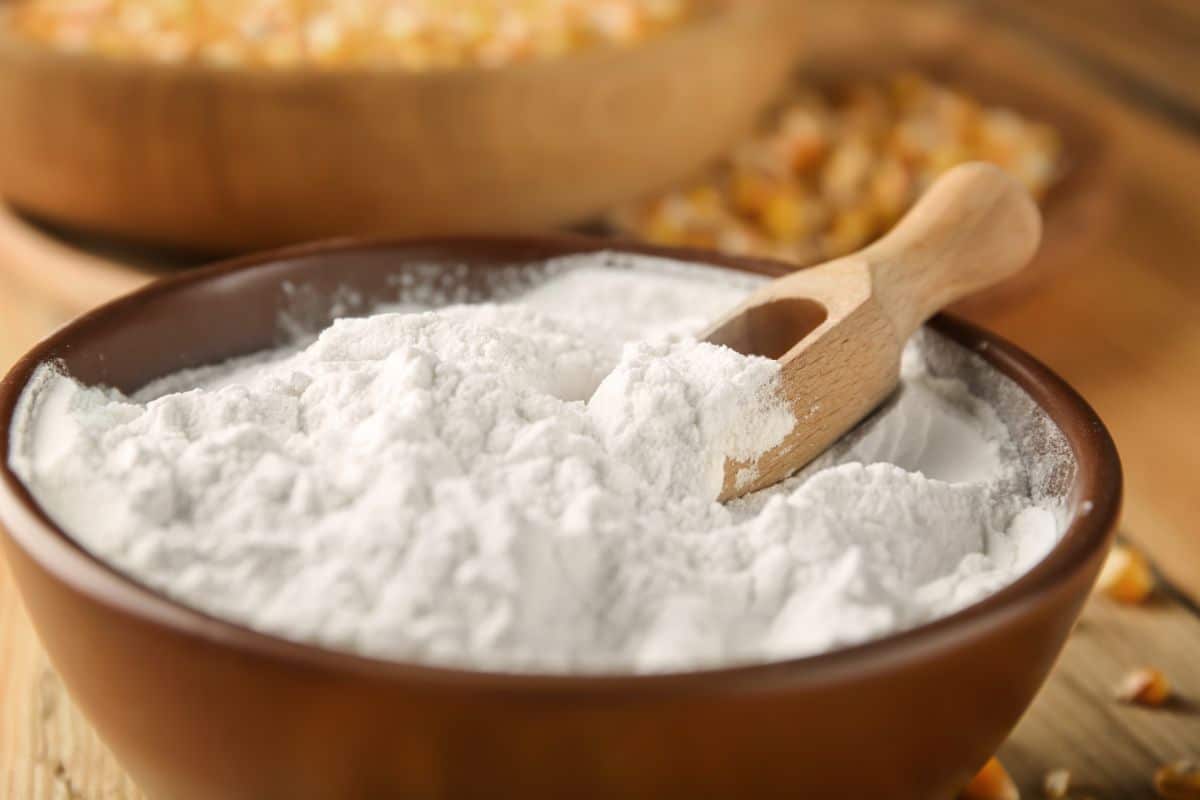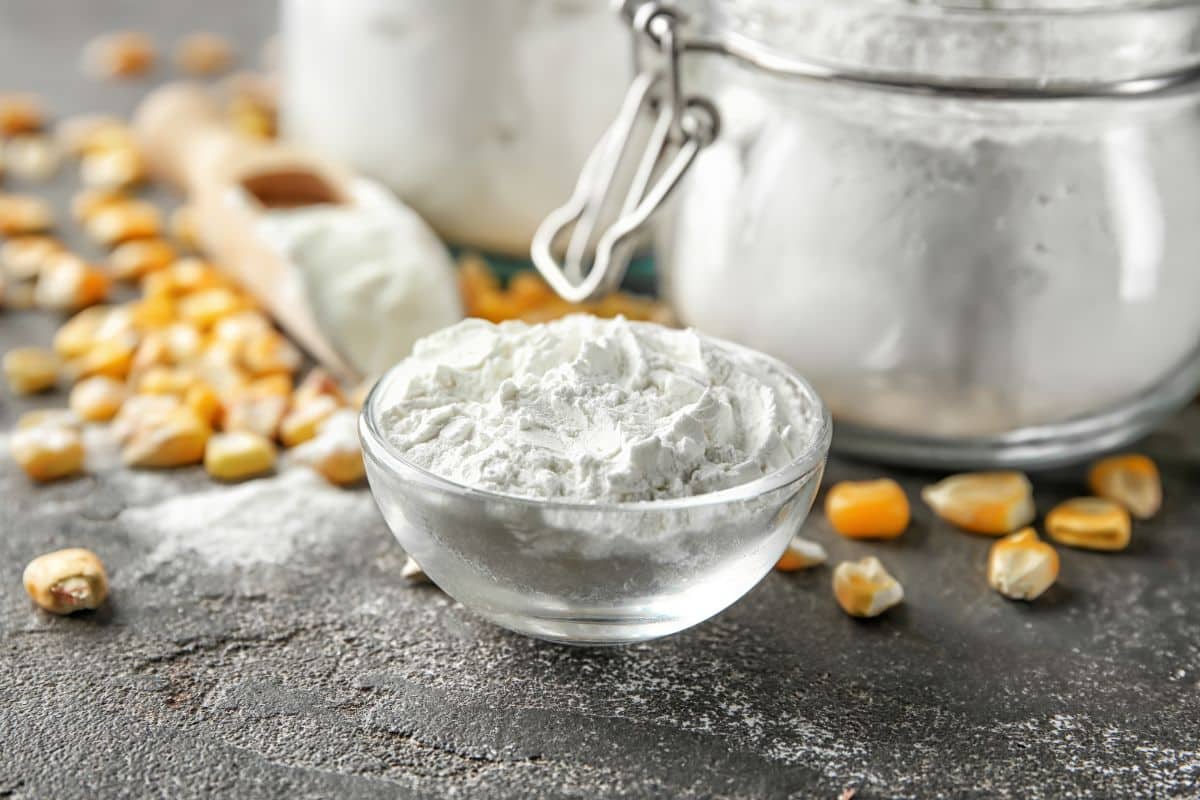Have you ever found yourself rummaging through your kitchen cabinets, wondering if that old box of cornstarch is still good to use? We’ve all been there! Today, let’s learn some things about cornstarch and explore the question: does cornstarch go bad?

Get ready to uncover the secrets behind this culinary staple and discover how to make the most of your cornstarch stash. So, put on your apron and let’s get started!
What Exactly Is Cornstarch?
Well, imagine a field of golden corn swaying in the breeze. Cornstarch is derived from that very corn, specifically from the endosperm—the starchy part of the corn kernel.
It’s a fine, powdery substance that’s often used as a thickening agent in various culinary creations.
Where Is Cornstarch Used?
Cornstarch has the remarkable ability to turn runny liquids into thick, luscious sauces, gravies, and puddings. It works its magic by absorbing moisture and forming a gel-like consistency when heated.
It’s like the culinary equivalent of a cape-wearing hero swooping in to save your soups and stews from the perils of watery mediocrity. But that’s not all!
Cornstarch also comes to the rescue when it comes to baking. It can add lightness and tenderness to cookies, cakes, and pastries.
Dusting a little cornstarch on your countertop prevents sticky situations while rolling out dough, giving you that perfect, effortless glide; from creamy custards to crispy coatings and silky-smooth sauces, it truly is a versatile culinary sidekick.
Factors That Can Affect The Shelf Life Of Cornstarch
Like any superhero, cornstarch does have its limits and there are various factors that can affect how long it remains in its prime fighting form:
Moisture And Humidity
Cornstarch is not a fan of excessive moisture or humidity. If it gets exposed to these sneaky foes, it can turn into a clumpy, sticky mess. Keep it in a dry environment to maintain its powdery perfection.
Exposure To Air And Contaminants
Just like the rest of us, this product prefers a clean and well-ventilated space. If it’s left open to the elements or comes into contact with contaminants, such as odorous spices or pantry pests, it can develop off-flavors or spoil faster.
Storage Conditions
Moreover, cornstarch craves cool and stable temperatures as heat and fluctuations in temperature can accelerate its deterioration, affecting both its texture and performance. So, avoid placing it near the stove or in direct sunlight.

What Is The Shelf Life Of Cornstarch?
The typical shelf life of cornstarch can vary, but when stored properly, it can retain its quality for around one to three years.
However, it’s important to note that cornstarch doesn’t have an official expiration date. Instead, most manufacturers provide a “best by” or “use by” date as a guideline for optimal quality.
And while cornstarch doesn’t necessarily go bad in the sense of becoming harmful to consume, it can lose its effectiveness over time. So, using it within the recommended time frame ensures the best results in your culinary endeavors.
Tips For Storing Cornstarch Correctly
Use Airtight Containers
Transfer your cornstarch from its original packaging to airtight containers, such as jars or resealable bags. This helps to prevent moisture, air, and unwanted odors from infiltrating its powdery fortress.
Store In A Cool, Dry Place
Find a cozy spot in your kitchen that maintains a stable temperature. Avoid storing it near the oven or any heat sources that could cause it to sweat or lose its magical thickening powers.
Keep Away From Moisture And Contaminants
Cornstarch dislikes damp environments, so steer clear of storing it near sinks or areas prone to humidity. Additionally, store it away from strong-smelling substances that can impart unwanted flavors.
Preventing Common Storage Mistakes
Remember, the enemies of cornstarch are moisture, air, and contaminants. Avoid these common storage blunders:
- Leaving the package open and exposed.
- Storing it in a poorly sealed container.
- Placing it in a hot and humid area, like next to the dishwasher.
Signs Of Spoiled Cornstarch
Curious about how to spot a rogue batch of cornstarch? Keep an eye out for these telltale signs that it has gone past its superhero expiration date:
- Discoloration or off-color appearance: If your once-white cornstarch starts resembling a rainbow, it’s time to bid it farewell.
- Presence of mold or insects: Nobody wants unexpected guests at their culinary party. If you spot any creepy crawlies or fuzzy mold, it’s a clear indication that your cornstarch has been invaded.
- Texture and smell changes: If your cornstarch feels clumpy, sticky, or emits a funky odor, it’s waving a red flag, signaling its retirement from the superhero squad.
The Bottom Line
While cornstarch doesn’t go bad in the traditional sense, it does have its limits. So, treat it right, store it smart, and trust your superhero senses to know when it’s time to bid adieu to that old box.
May your culinary creations always be thick, luscious, and oh-so-delicious! Happy cooking!






